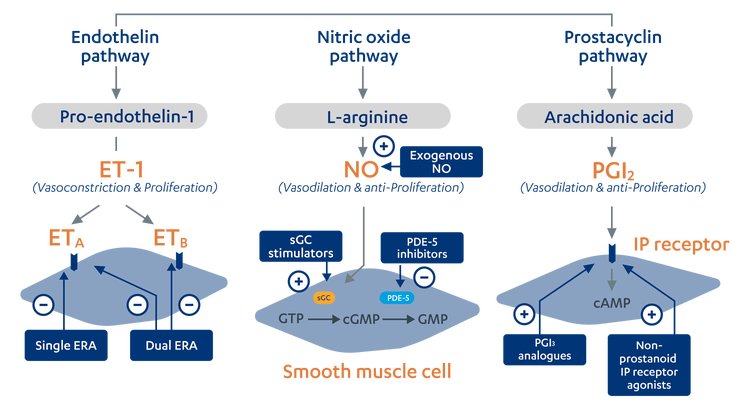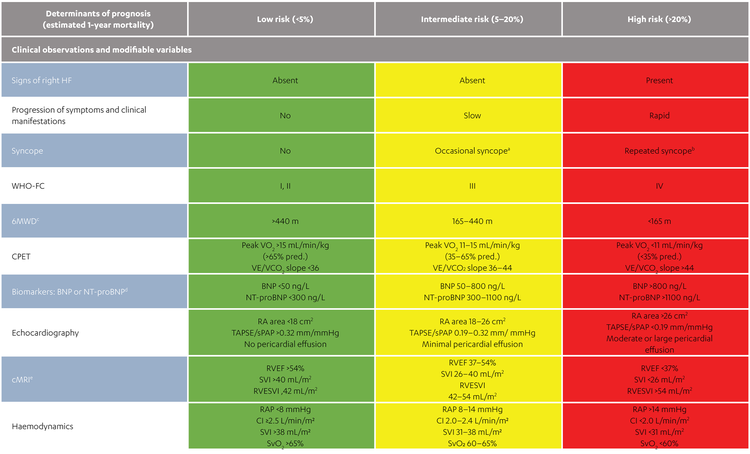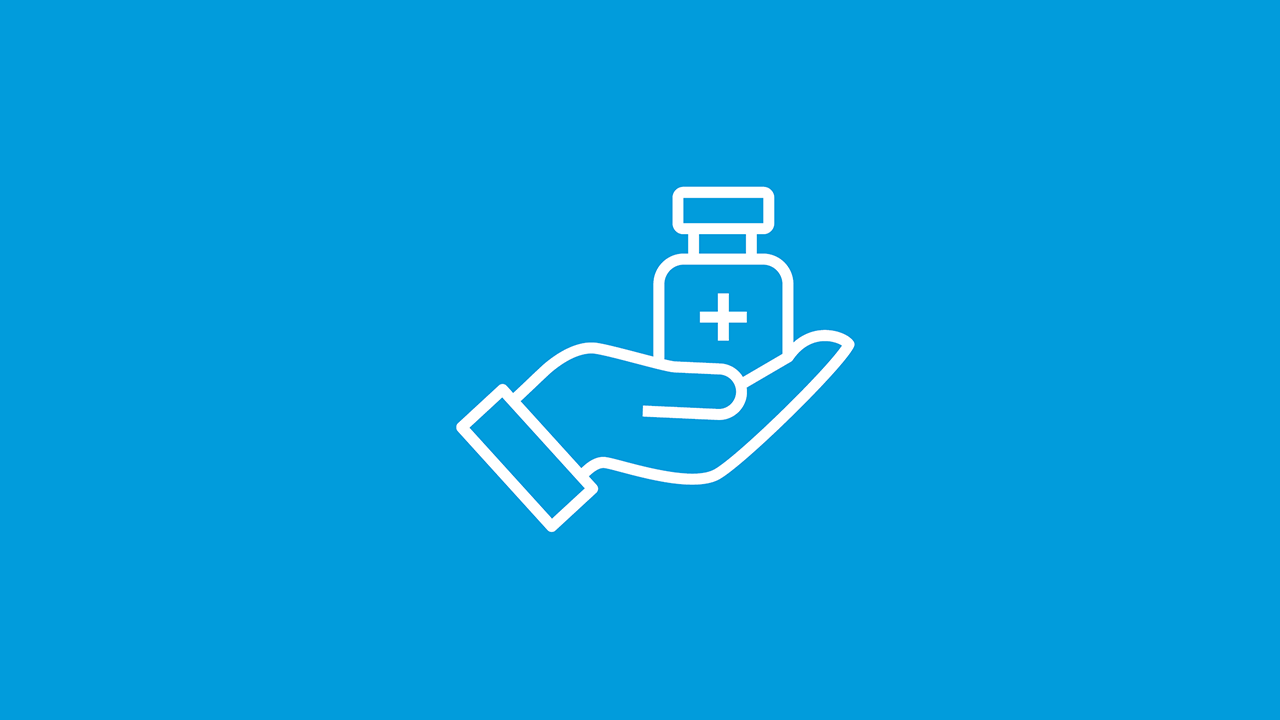Treatment options
Treatment options

How to treat PAH
Pulmonary arterial hypertension (PAH) is a rare and severe disease that continues to progress over time.[1] Although there is no cure, recent advances in treatment strategies with increased therapeutic options have offered an improvement in prognosis and survival.[2][3]
PAH-specific therapies have been developed to target one of three major pathways known to be involved in the development of PAH. Combination therapy (using two or more classes of drugs together) is an option in the management of PAH to simultaneously target multiple pathways involved in the disease pathogenesis. Evidence to support combination therapy is growing.[4][5]. The 2022 European Society of Cardiology and European Respiratory Society (ESC/ERS) guidelines recommend initial combination therapy for PAH or double or triple sequential combination therapy in cases of inadequate clinical results or in cases of deterioration.[4]
Three pathogenic signalling pathways are targeted in the treatment of PAH[5]

Adapted from Humbert et al. 2014[5]
cAMP, cyclic adenosine monophosphate; cGMP, cyclic guanosine monophosphate; ERA, endothelin receptor antagonist; ET, endothelin; GMP, guanosine monophosphate; GTP, guanosine triphosphate: IP, prostacyclin; NO, nitric oxide; PAH, pulmonary arterial hypertension; PDE-5, phosphodiesterase type 5; PGl2, prostacyclin; sGC, soluble guanylate cyclase
Endothelin pathway
The endothelin-1 expression level is upregulated in patients with PAH, causing potent vasoconstriction and smooth muscle cell proliferation. Endothelin receptor antagonists (ERAs) act by blocking the binding of endothelin to its receptors to prevent this process.[6]
Nitric oxide pathway
Phosphodiesterase type-5 (PDE-5) inhibitors and guanylate cyclase stimulators act on the nitric oxide pathway to promote vasodilation and have antiproliferative effects on vascular smooth muscle cells.[4]
Prostacyclin pathway
Prostacyclin induces potent vasodilation and inhibition of platelet aggregation and has both cytoprotective and antiproliferative effects. Prostacyclin receptor agonists and prostacyclin analogues act by helping to correct the deficiency in endogenous prostacyclin seen in patients with PAH.[4]
Importance of performing risk assessment
Upon diagnosis, patients are assessed for risk of disease progression. Guidelines recommend regular multiparameter risk assessment, both at diagnosis and follow-up (every 3–6 months) to allow the treatment strategy to be tailored to the individual patient at the earliest opportunity.[4] The risk status of patients can be categorised as either low, intermediate or high. This corresponds to an estimated 1-year mortality of <5%, 5–20% or >20% respectively and is based on a number of determinants including WHO functional class, exercise capacity and haemodynamic parameters. There is no single variable that can provide sufficient prognostic information on its own; a multidimensional approach is required.[4]

Adapted from Humbert 2022
Continue reading

Read more about Janssen's molecules for managing PAH.

Get access to diagnostic tools and educational aids to help you identify, assess and manage your PAH patients.
We're here to help.
Would you like to know more about the screening and management of pulmonary arterial hypertension? Book an appointment with a Janssen product specialist by clicking the button below.

Do you have a question for us or did you not find what you were looking for? Let us know and one of our Janssen's specialists will contact you as soon as possible.
Discover here the Janssen's portfolio and product SmPC's.
On this page you will find interactive 3D animations of the human anatomy and various syndromes. This allows you to zoom in on the anatomy, tissue structures, disease mechanisms and the course of the disease.